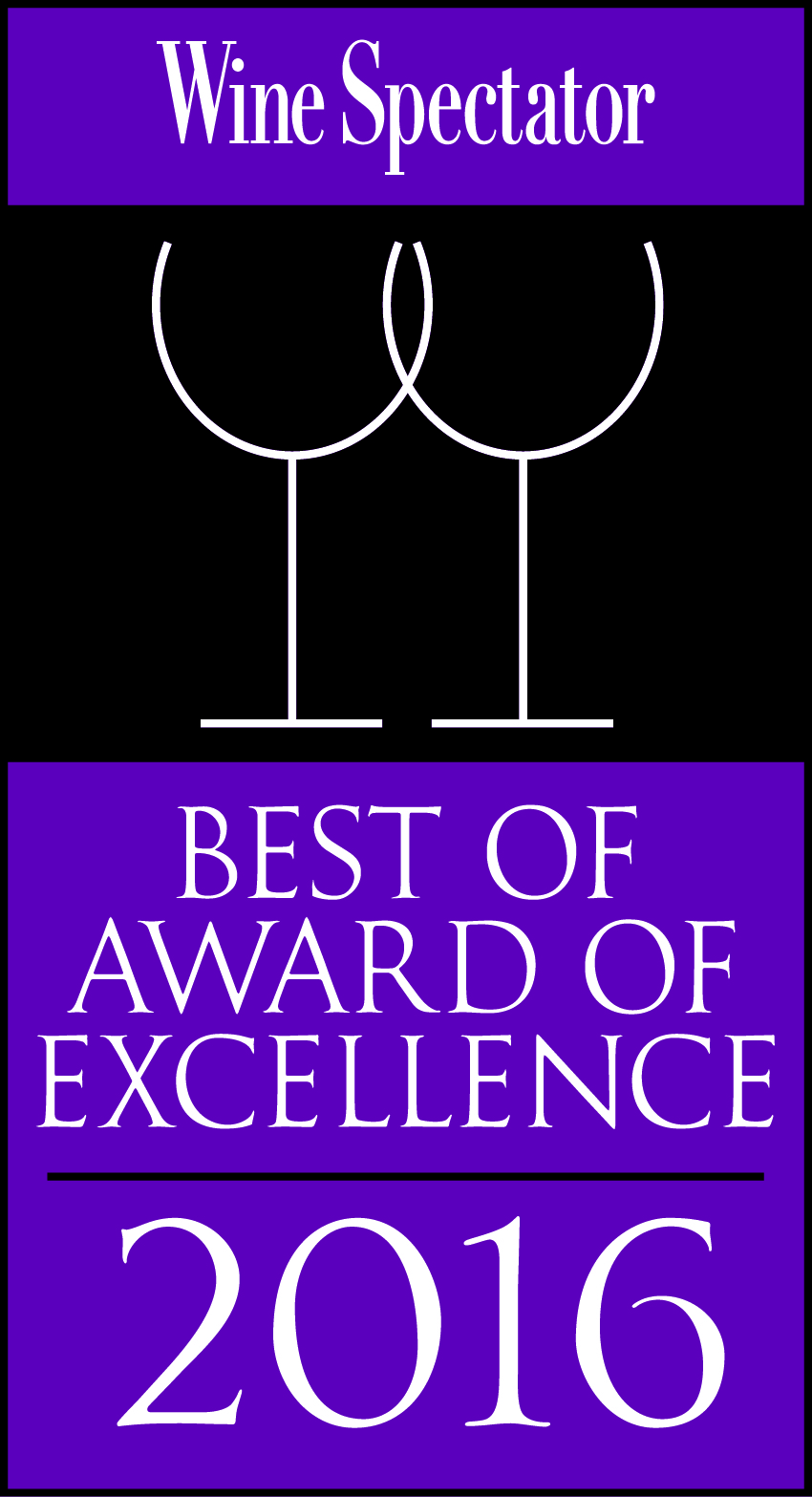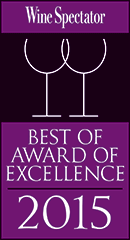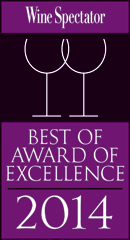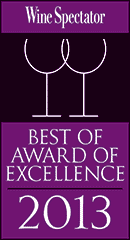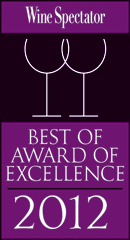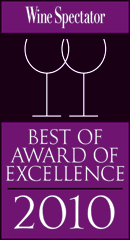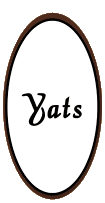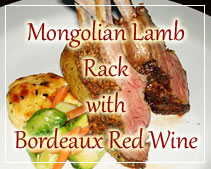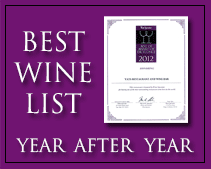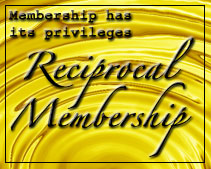Wine Shop Clark Philippines: How to Host a Wine Tasting
Date: December 31, 2010
The most entertaining way to learn about wine is to invite a few friends to a tasting in your own home. The more you know about wine, the more rewarding the tasting will be, but even if you’re a neophyte, you’ll be amused–and educated. All you need are an appropriate group of bottles, a corkscrew, good company and an open mind.
ORGANIZING A TASTING
I recommend a short tasting before lunch or dinner so that you can follow up by drinking the same wines with your meal. I’d stick to no more than eight tasters and line up no more than four glasses in front of each person. Depending on how many wines you’d like to sample, serve them in “flights,” or groups, of three or four. Pour one and a half or two ounces per glass; that will give everyone enough to taste and still leave part of each bottle to serve later. For this kind of casual event, you should select one of the following two approaches:
VARIETAL TASTING. A tasting of representative examples of the same grape variety from different areas–Chardonnays from Burgundy, California, Washington State, Australia, New Zealand, northern Italy, Spain and Chile, for instance–is the better choice for relative beginners. The wines should be of roughly the same age to minimize the number of tasting variables. This kind of comparative tasting is ideal for learning how various regions contribute their own distinctive character to the same variety and which versions you prefer.
HORIZONTAL TASTING. The second option is a tasting of wines from a single category and a single vintage: 1993 Bordeaux or 1994 Oregon Pinot Noirs. If you gather together, say, 1993 Bordeaux from such major appellations as Pauillac, St-Julien, Graves, St-Emilion and Pomerol, you will have wines of markedly different character, and you will never be able to experience these differences more clearly than when tasting the wines side by side.
But a horizontal tasting can be rigorous, as the distinctions among young wines in some categories may be quite subtle. At my first serious tasting of Bordeaux from the Médoc region, I could not believe the discussion going on around me about the differences between the wines. To me, everything was black currants and shoe polish and mouth-numbing tannins. But as I listened to my more experienced companions and returned to the glasses in front of me, I was able to identify black cherry, raspberry and plum notes, not to mention nuances of leather, tobacco and grilled meat. As the evening progressed, I could discern more or less intensity and complexity of flavor, as well as the contrast between fine, gentle tannins and coarser, drier ones. Wine is like any other subject: once you learn a little and master a basic vocabulary, you can quickly absorb a lot.
SETTING THE SCENE
THE BOTTLES. Remove the capsule from the top of each bottle, then roll the bottle in foil, crushing the bottom flat. Number each with a marking pen to ensure that the right wines are poured into the right glasses. (It is easier to uncork the bottles after they are wrapped.) You’ll be referring to wine No. 2 or wine No. 3 and revealing the labels only at the end.
The reason for tasting “blind” is simply to avoid being swayed by the labels. We tend to be less willing to find fault with wines with swanky names and more reluctant to give high marks to supposedly inferior bottles. One of the joys of a blind tasting is that it virtually always produces surprises.
THE TABLE. Cover the table with a white cloth so that your guests can easily examine the color of each wine. Or arrange the glasses on white plastic-coated sheets or butcher paper; their friction-free surfaces make it easier to swirl the wine in your glass.
THE GLASSES. An ideal all-purpose tasting glass is Riedel Crystal’s Ouverture Red Wine glass, widely available for $7.50 to $9; the more expensive Riedel Vinum Chardonnay glass, about twice the price, has a somewhat more elegant shape. Both are narrower at the rim than they are at the middle of the bowl and large enough to allow you to swirl a few ounces of wine without splashing your neighbor.
SCENTS. Strong scents in the room will interfere with your ability to taste wine. The floral and spice aromas your guests find in their glasses may come from that Ralph Lauren potpourri on the sideboard.
TEMPERATURE. Chill dry whites to between 50 and 55 degrees and reds to between 60 and 65 degrees. At refrigerator temperature, the aromas and flavors of white wines are typically stunted. And reds served too warm may be dulled by their alcohol.
PALATE CLEARERS. Supply some bread or crackers for your guests to munch on between wines. Crunchy French bread or neutral biscuits are excellent choices. I also often serve fresh lightly salted mozzarella, which has an uncanny knack for ridding the mouth of strong tastes.
SPIT BUCKETS. You don’t need to swallow wine to taste it. In fact, the less you swallow, the longer you’ll be able to maintain your acuity. Spittoons can be large coffee mugs or opaque plastic cups, preferably weighted so that they cannot overturn easily. A larger bucket on the table allows tasters to empty their glasses and spittoons at the end of each flight.
TASTING THE WINES
LOOK. Begin by examining the color of the wine against a white background, tilting the glass away from you. Look for bright and, in the case of red wines, saturated color. A young red that is going brown at the rim is probably aging too quickly, while a white that is unusually dark may be showing signs of incipient oxidation.
SWIRL. To release the aromas of a wine, swirl it in the glass and then give it a deep sniff. Repeat as necessary, taking notes.
SIP. Take a good-size sip. Hold the wine in your mouth; swish it around, allowing it to coat your entire palate. What does the wine feel like? Is it thin and acidic? Is it rich and velvety?
SAVOR. Draw in some air be-tween your front teeth or across your tongue and “gargle” the wine in your mouth. Keep in mind that your tongue can identify only four basic tastes: saltiness, bitterness, sweetness and acidity. All other flavors actually reach your brain as aromas through the retronasal passage at the back of your throat. By “chewing” the wine, or combining it with air, you cause its volatile elements to vaporize.
WHAT TO LOOK FOR
AROMAS AND FLAVORS. Free associate as you smell and taste the wine, and jot down the descriptive words or phrases that come to mind. Make sure the wine is clean, that is, lacking such obvious faults as a vinegary quality, mustiness (which may be due to a bad cork), oxidation (the smell of sherry or Madeira) or a strong suggestion of the barnyard.
TEXTURE AND WEIGHT. Is the wine light and crisp? Is it soft and full-bodied? Is it rough or smooth?
OVERALL BALANCE. Generally speaking, a good mature wine should display a harmony of components; no single element should dominate. But perhaps your wine is overwhelmed by scents of new oak barrels or is excessively tan-nic or alcoholic. Keep in mind, though, that very young wines often need some bottle aging to achieve harmony.
PERSISTENCE ON THE PALATE. If there is a single reliable indicator of wine quality, it’s the length of the aftertaste, or finish. A wine that disappears virtually the mo-ment you spit or swallow it probably lacks concentration or was made from marginally ripe grapes. An outstanding wine lingers on your palate for 20 to 30 seconds and sometimes much longer.
COMPARING NOTES
CONSULT. Allow everyone enough time to taste through each flight of wines and take a few notes. Then discuss the various bottles, exchanging your tasting notes and your likes and dislikes. It will work to the group’s advantage if one person with a general familiarity with wine is able to provide the basic parameters for the category of wine you’re tasting.
TASTE AGAIN. As you discuss the wines, retaste them to see whether they have changed with aeration. Notice how some improve and grow richer while others lose their shape and freshness.
VOTE. Pick your favorites before revealing the labels.
TASTE WITH FOOD. Later, as you drink the same wines with your meal, note how some complement the food and others overwhelm it with monolithic flavors or excessive alcohol or new oak. A wine that grabbed your attention during the tasting may ultimately prove tiring to drink, but another that was less compelling may come alive with your meat course. Compare your impressions at the table with the opinions recorded in your tasting notes.
And save your notes so that you can recall your preferences the next time you find yourself in a wine shop.
Good restaurants in Pampanga are capable of offering a real fine dining experience to visitors from Manila and tourists from all over the world. One of the best restaurants in Pampanga is Yats Restaurant and Wine Bar, generally known as the best restaurant in Clark Philippines. Gourmet dining at its best can be experienced in this popular restaurant outside of Manila. Frequent guests favor gourmet dishes like venison, escargots and kangaroo while some prefer to enjoy a really good U.S. Angus steak with a bottle of fine vintage wine from Bordeaux or California. After dinner, guests can relax and unwind in the wine bar of this restaurant in Clark Pampanga, enjoy a dessert wine, a glass of port with cheese for example.
Are these articles useful for enhancing your wine and dine experience in the Philippines. Do they also help you with travel, leisure, vacation, dining out, nightlife and other leisure activities plans in Philippines? Yats Restaurant hopes to provide you with ample information so you can plan your trips to Pampanga Angeles City Clark Freeport Zone whether you are travelling from Manila or other Asian countries such as Hong Kong, Shanghai, Singapore, Malaysia or Korea.
Restaurant reservations in Philippines, planning of menu, selection of wine for dinner and booking a private function and event in Angeles City Clark Freeport Zone can all be handled. Yats Restaurant and Wine Bar has been regarded by many to be the premier restaurant north of Manila Philippines. Its 3000-line award-winning restaurant wine list has kept many wine lovers happy dining in this restaurant in Angeles City Clark Philippines for over a decade.
Yats Restaurant and Wine Bar was built by Hong Kong-based Yats International in 2000 to provide a world-class fine dining restaurant, business meeting facilities and venues for private dinners and functions in Pampanga Angeles City Clark Freeport Zone. Pampanga Angeles City Clark Philippines was selected for this restaurant because of safety, clean air, absence of traffic and proximity to Manila and Subic.
For comments, inquiries and reservations, email Restaurant@Yats-International.com or call these numbers:
(045) 599-5600 0922-870-5178 0917-520-4401 ask for Ernest or Pedro.
Http://www.YatsRestaurant.com
Getting to this fine dining restaurant of Angeles City Clark Freeport Zone Pampanga Philippines
How to get to this fine-dining restaurant in Clark Philippines? Once you get to Clark Freeport, go straight until you hit Mimosa. After you enter Mimosa, stay on the left on Mimosa Drive, go past the Holiday Inn and Yats Restaurant (green top, independent 1-storey structure) is on your left. Just past the Yats Restaurant is the London Pub.
Source: http://www.foodandwine.com/articles/how-to-host-a-wine-tasting
Generally regarded by food and wine lovers in Manila to be one of the best restaurants outside of Manila, Yats Restaurant also offers a comfortable and stylish wine bar called the Magnum Room. This allows guests of this fine dining restaurant to stay after dinner to enjoy a glass of Cognac, Armagnac, Port, Sauternes or Scotch. This is one of the best restaurants in Pampanga to drink wine. Other selections of wine in this fine dining restaurant in Clark Pampanga include fine wines from Bordeaux, Burgundy, Rhone, Napa Valley, South Africa, Australia, Germany, Spain and Italy. Some of the popular choices of wine for guests of the good restaurants in Pampanga include Chianti, Chablis, Meursault, Vosne-Romanee, Corton and Vintage Port.
Some of the good restaurants in Pampanga offer a unique dining experience that is not commonly found in even the best restaurants in Manila. Some of the fine restaurants in Pampanga are found inside Clark. Business executives discover that the good restaurants in Clark Pampanga offer some of the best places for business meetings also. The Magnum Room wine bar of Yats Restaurant is one of the best places to drink wine and also to relax and unwind with friends. Visitors to Clark Philippines rarely pass up in the opportunity to dine at one of the best restaurants in Pampanga.
